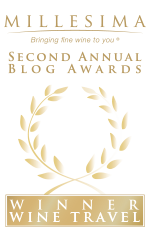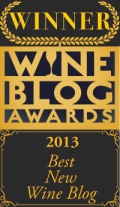A fall weekend in the Hudson Valley inevitably leads to two things: apple hoarding and wine tasting. This year, my annual visit led me South-West of the river near Washingtonville and Warwick, and consequently, to Brotherhood Winery.
I am generally disappointed in the Hudson Valley wineries as a class. I have been to most of them several times, but they fail on an annual basis to improve their game. Yet, whenever I’m in the region, I can’t help but follow the grape trail like a brain-dead zombie. At least there are a handful of reliable wineries where I can get my fix when in desperation mode (on vacation and must…go…wine tasting). Benmarl and Millbrook are perhaps the most serious about their winemaking mission.
Due to low expectations, I had eluded this little corner of the valley for the last ten years. This time around, with obligations in the area, I figured I would check out the self-proclaimed Oldest Winery in America.
Brotherhood, established in 1839, earned the title of Oldest since the winery was able to operate continuously throughout Prohibition. Let’s see: wealthy owners + corrupt politicians = exemption from the rules; in Brotherhood’s case, they were making holy wine (ironically out of an unholy alliance). Now they produce an enormous array of wines including a wine-ish product, commissioned by NJ Housewife Teresa somebody, called a Fabellini (talk about unholy!)
The tasting room is vast, and can probably accommodate loads of tour buses. Visitors are asked to purchase a ticket and a chalice before they can drink—choose wisely: $5 buys a tiny, flimsy plastic cup like you find in your dentist’s office, or $7 gets you a souvenir glass. I ponied up the extra two bucks for the glass glass since I don’t drink wine from the same vessel that delivers a fluoride rinse. The manager—or better, the winemaker—should make a push to remove plastic from the tasting experience; it is insulting to their visitors and embarrassing to the winery.
If you can’t tell by now, I was pretty skeptical. However, the experience turned a corner upon meeting the very knowledgeable and friendly JoAnn at the tasting counter. We bonded immediately over her equal degree of mortification over the cup fiasco. She poured us through their line-up of dry wines and explained only the Chardonnay and Pinot Noir were grown in the Hudson Valley; the rest of the grapes were purchased from the Finger Lakes or Long Island. In fact, that is the model most wineries follow throughout the Hudson Valley. All in all, the wines were perfectly acceptable and reasonably priced for what they were and for NY State. Their Pinot Noir stood out from the pack, however, due to its price point at $14.99. Below are my notes.
Soft fruit flavors of strawberry, cherry and raspberry are complemented by a pronounced earthiness from wet leaves, mushroom and baking spice on the finish. Good acidity adds structure, and the wine, surprisingly, bears a faint resemblance to an AOC Bourgogne. No new ground is broken here, but for $14.99, this has to be one of the better, inexpensive Pinots in NY State. Frankly, I can’t remember the last time I bought a Pinot Noir for that price, and still finished the bottle.



















